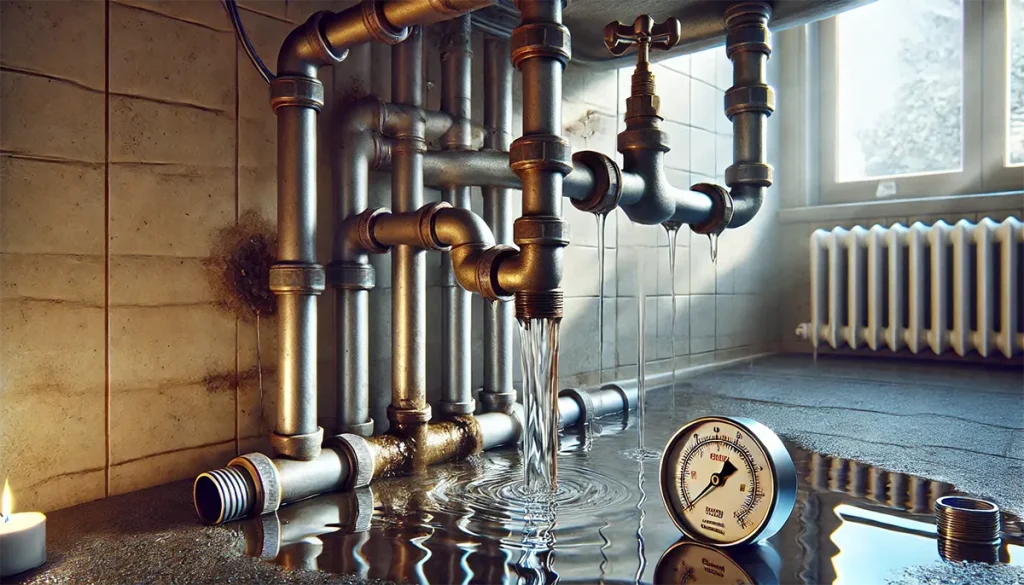The critical importance of pressure testing and leak detection in gas line installations cannot be overstated. These procedures are fundamental to ensuring the safety, integrity, and efficiency of gas distribution systems. Regrettably, the neglect of these essential practices is a prevalent issue that can lead to severe consequences. This section will elucidate the significance of pressure testing and leak detection, the potential ramifications of their omission, and the methodologies employed in these crucial processes.
The Imperative of Pressure Testing
Pressure testing is a vital procedure in the installation and maintenance of gas lines. It serves as a primary means of verifying the structural integrity and leak-tightness of a gas distribution system. The process involves subjecting the gas lines to pressures exceeding their normal operating conditions, thereby identifying potential weaknesses or defects that may not be apparent under standard operating pressures.
The importance of pressure testing lies in its ability to:
- Identify Weak Points: By exposing the system to elevated pressures, any inherent weaknesses in pipes, joints, or fittings become evident.
- Ensure System Integrity: Successful pressure tests confirm that the gas line can withstand its intended operating pressures with an adequate safety margin.
- Comply with Regulations: Many jurisdictions mandate pressure testing as part of their gas line installation and maintenance requirements.
- Prevent Future Failures: By detecting and addressing issues early, pressure testing helps prevent potentially catastrophic failures during operation.
The Criticality of Leak Detection
Leak detection is complementary to pressure testing and is equally crucial in maintaining the safety and efficiency of gas distribution systems. It involves the systematic inspection of gas lines to identify and locate any points where gas may be escaping from the system. Effective leak detection is essential for several reasons:
- Safety Assurance: Gas leaks pose significant safety risks, including the potential for fires, explosions, and asphyxiation.
- Environmental Protection: Methane, the primary component of natural gas, is a potent greenhouse gas. Detecting and preventing leaks helps mitigate environmental impact.
- Economic Efficiency: Undetected leaks can result in substantial gas losses, leading to increased operational costs and resource waste.
- System Reliability: Regular leak detection helps maintain the overall reliability and performance of the gas distribution system.
Consequences of Neglecting Pressure Testing and Leak Detection
The omission of these critical procedures can have severe repercussions:
- Increased Safety Risks: Undetected weaknesses or leaks in gas lines significantly elevate the risk of accidents, potentially leading to property damage, injuries, or fatalities.
- Regulatory Non-Compliance: Failure to conduct required pressure tests and leak detection can result in legal penalties and regulatory sanctions.
- Reduced System Efficiency: Undetected leaks can lead to decreased system performance and increased operational costs.
- Environmental Impact: Neglecting leak detection can contribute to unnecessary greenhouse gas emissions.
- Diminished Public Trust: Gas line failures or accidents due to inadequate testing can erode public confidence in gas utilities and service providers.
Methodologies for Pressure Testing and Leak Detection
Effective pressure testing and leak detection require systematic approaches and specialized equipment:
Pressure Testing Methods:
- Hydrostatic Testing: Utilizing water as the test medium, this method is often preferred for its safety and effectiveness.
- Pneumatic Testing: Using compressed air or inert gas, this method is suitable when water cannot be introduced into the system.
Leak Detection Techniques:
- Gas Detector Surveys: Utilizing portable gas detectors to identify the presence of gas in the atmosphere around gas lines.
- Acoustic Leak Detection: Employing sensitive acoustic sensors to detect the sound of gas escaping from small leaks.
- Tracer Gas Method: Introducing a non-toxic, easily detectable gas into the system to pinpoint leak locations.
Best Practices for Implementation
To ensure the effectiveness of pressure testing and leak detection:
- Adhere to Industry Standards: Follow established guidelines such as those set by the American Society of Mechanical Engineers (ASME) or relevant local regulations.
- Regular Scheduling: Implement a consistent schedule for pressure testing and leak detection, not just during installation but throughout the system’s lifecycle.
- Proper Documentation: Maintain detailed records of all tests performed, including methodologies, results, and any corrective actions taken.
- Utilize Qualified Personnel: Ensure that all testing and detection procedures are carried out by trained and certified professionals.
- Invest in Advanced Technologies: Employ state-of-the-art equipment and techniques to enhance the accuracy and efficiency of testing and detection processes.
In conclusion, the neglect of pressure testing and leak detection in gas line installations represents a significant oversight with potentially dire consequences. By recognizing the critical nature of these procedures and implementing them diligently, gas line installers and operators can significantly enhance the safety, reliability, and efficiency of gas distribution systems. The investment in proper testing and detection methodologies is not merely a regulatory obligation but a fundamental responsibility to ensure public safety and environmental stewardship.



